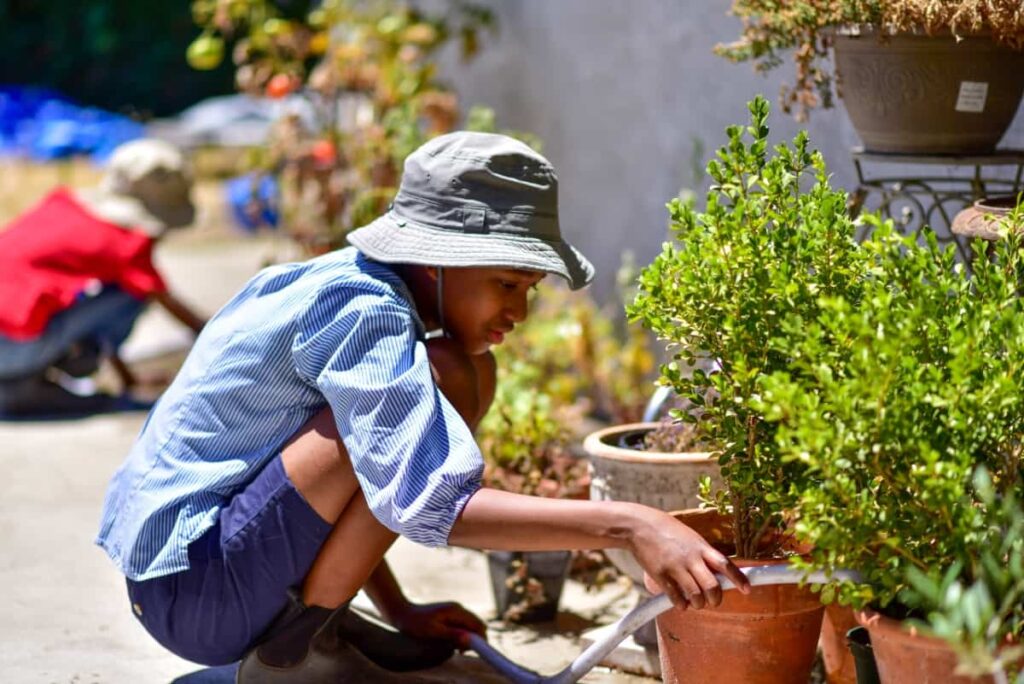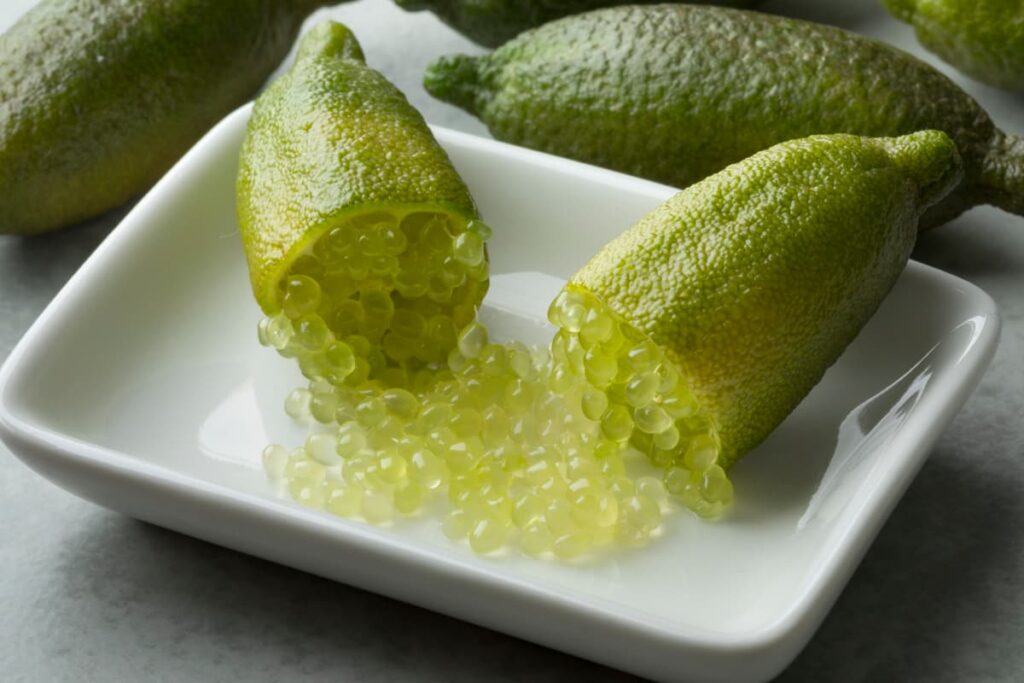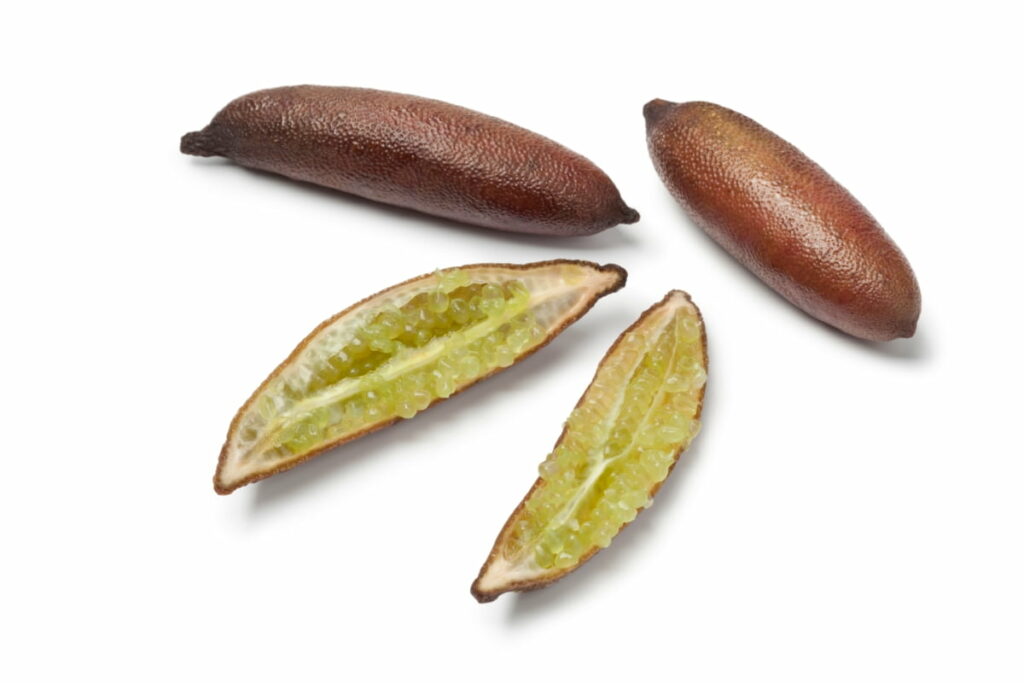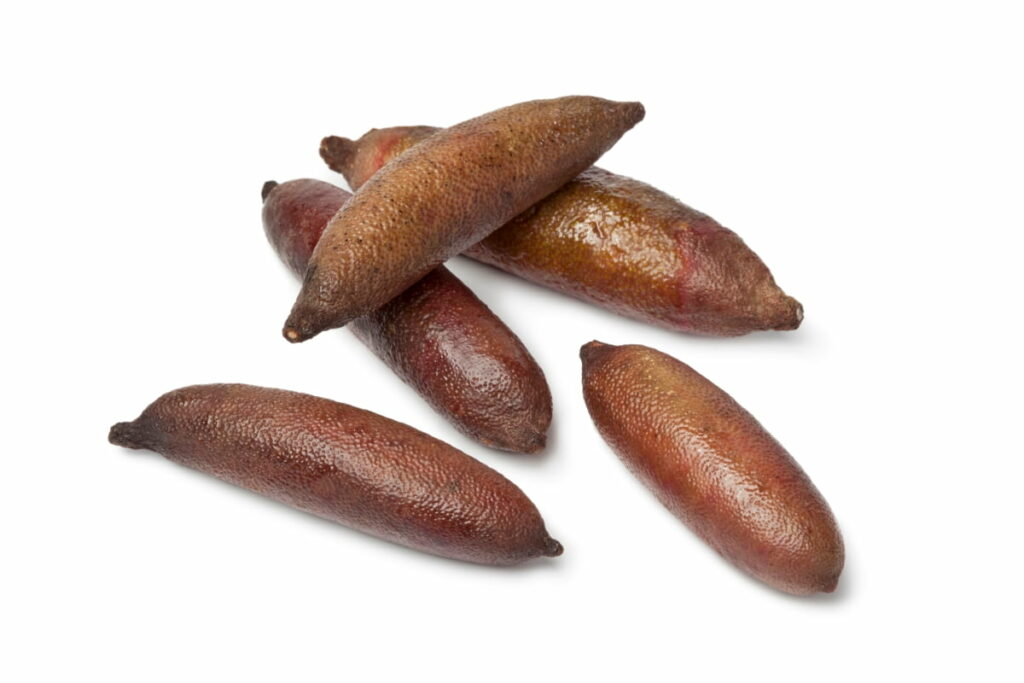Growing Finger Lime (Citrus australasica) in pots from both seeds and cuttings is a rewarding and enjoyable endeavor. This article guides you through the entire process, from planting to harvest, ensuring a successful cultivation experience. Discover the unique characteristics of Finger Limes, their ideal growing conditions, and step-by-step instructions on propagating them from seeds or cuttings.

How to Grow a Finger Lime in Pots
Best Varieties of Finger Lime for Pot Growing: Finger Lime Varieties
- Red Champagne: Known for its vibrant red vesicles, red champagne finger liqueurs are not only visually appealing but also produce a delightful tangy flavor. These compact trees adapt well to container gardening.
- Green Goddess: This variety features green vesicles and has a mild, slightly sweet taste. Green Goddess Finger Limes are well-suited for pots, making them a great choice for urban or limited-space gardening.
- Pink Ice: With pink to red vesicles and a sweet-tart flavor, Pink Ice Finger Limes are versatile. They are relatively compact, making them suitable for pot cultivation.
- Sunrise: Sunrise Finger Limes offers a striking combination of yellow and green vesicles with a tangy flavor. These trees are well-suited for pots, allowing you to enjoy their unique appearance and taste on a small scale.
- Alstonville: Alstonville Finger Limes are known for their elongated shape and bright green vesicles. They are adaptable to container environments and can thrive with proper care and maintenance.
Propagation of Finger Lime from Seeds and Cuttings
From Seeds
- Remove seeds from ripe Finger Limes. Clean them and let them air dry for a day.
- Fill seed trays with a well-draining mix suitable for citrus plants.
- Plant the Finger Lime seeds about 1/2 to 1 inch deep and cover them lightly. Water the soil thoroughly.
- Cover your Finger Lime seed trays with plastic wrap to maintain high humidity. This encourages germination.
- Place the containers in a warm, well-lit area. Ensure the soil stays consistently moist.
- Germination may take several weeks. Once seedlings have a few leaves, transplant them into larger pots.
From Cuttings
- For propagating Finger Lime trees, take 6-8 inch cuttings from healthy, disease-free branches. Choose branches with semi-hardwood growth.
- Trim each cutting just below a node. Remove excess leaves, leaving a few at the top.
- Dip the cut end of each cutting into the rooting hormone to promote root development.
- Insert the cuttings about 2-3 inches deep into the well-draining potting mix. Water the soil thoroughly.
- Cover your container with a plastic dome to create a humid environment, promoting root development.
- Place the containers in a warm, shaded area. Avoid direct sunlight initially.
- Roots may develop in several weeks to a few months. Once rooted, transplant the cuttings into larger pots.
Choosing the Right Pot for Finger Limes
A pot with an 18-inch diameter and a 12-inch depth is the ideal pot size for a Finger Lime tree to accommodate the roots and allow for proper growth. It should have drainage holes to avoid waterlogging, promoting well-draining soil conditions.
Choose a lightweight, durable material like plastic or fiberglass to ease handling and reduce the overall weight. Additionally, consider the aesthetics of the pot, as it contributes to the overall appeal of your container garden. Prioritize functionality, providing a suitable environment for your Finger Lime tree to flourish and thrive in a confined space.
Potting Mix for Finger Lime Trees
Begin with a high-quality citrus potting mix or formulate one by combining equal parts of perlite, coconut coir, and well-aged compost. Ensure the mix is well-draining, preventing waterlogged roots. Add a slow-release citrus fertilizer to provide essential nutrients throughout the growing season. Incorporate a handful of organic matter, like well-rotted manure, to enhance soil structure and fertility. To promote acidity, include pine bark or pine needles. Thoroughly blend the components, breaking up any clumps.
In case you missed it: 20 Steps to Grow Mandarin Oranges in Season from Seeds, Fruit, indoors, and Pots

Planting Finger Lime Trees in Pots
- Gently remove the Finger Lime from its nursery container, and do not disturb the roots excessively.
- Place the tree in the center of the pot. Ensure it sits at the same depth as it was in the nursery.
- Backfill with the potting mix, pressing it down gently as you go.
- Thoroughly water the soil and eliminate air pockets.
- Position the pot in a sunny location, providing at least 6-8 hours of sunlight daily.
Training and Pruning of Finger Lime Plants Planted in Pots
Begin by establishing a central leader, encouraging a strong, upright trunk. Remove any competing or inward-facing branches to enhance air circulation and light penetration. Encourage a bushy habit by pinching back the tips of young shoots. Regularly inspect for dead or diseased branches and promptly remove them. As your Finger Lime grows, thin out crowded branches to maintain an open canopy. Use stakes or ties if needed to support the main trunk. Prune annually during the dormant periods, typically in late winter or early spring. T
Watering and Irrigation for Potted Finger Limes
Water deeply whenever the topsoil is dry to the touch. During the growing season, typically spring and summer, irrigate more frequently, ensuring the soil remains consistently moist but not soggy. In contrast, reduce watering in the dormant season, generally fall and winter, allowing the soil to dry out slightly between waterings. Adjust the watering schedule based on environmental factors such as temperature, humidity, and sunlight exposure.
Fertilizers for Boosting Finger Lime Growth
Fertilizing your potted Finger Lime tree is crucial for robust growth and fruit production. Apply a balanced citrus fertilizer with a ratio like 2:1:1 in spring, as new growth begins. Repeat it every 6-8 weeks during the growing season, but cease fertilization in late summer to prevent stimulating tender growth susceptible to frost damage. Use a slow-release formula for sustained nutrient availability. Follow package instructions for proper dosage, and water the plant after application to prevent root burn.
In case you missed it: How to Increase Citrus Fruit Size: Exploring Optimization for Larger Citrus Fruit Growth

Winter Care for Protecting Potted Finger Limes
Overwintering your potted finger’s lime is essential for protecting it from cold temperatures. As temperatures drop, move the container to a sheltered location, such as a garage or greenhouse, to shield it from frost. Alternatively, wrap the pot in insulating materials or use frost cloth to protect the tree. Reduce watering in winter to avoid waterlogged soil, as damp conditions coupled with cold can harm the roots. If frost is anticipated, consider placing a layer of mulch around the base for added insulation.
Harvesting and Storing Finger Lime Fruits
Harvest Finger Limes when the vesicles are firm, glossy, and display vibrant color. Gently cut the stem, avoiding damage to the tree. Store harvested Finger Lime fruits in the refrigerator for up to two weeks. To prolong freshness, keep Finger Limes in a sealed container. Regularly check for ripeness, and enjoy the unique citrus pearls in various culinary delights.
Steps to Grow a Finger Lime Indoors
- To grow Finger Lime indoors, start with fresh seeds or cuttings.
- Use a well-draining potting mix in a spacious container with drainage holes.
- Plant seeds 1/2 inch deep or insert cuttings into the soil. Maintain a warm, well-lit location, providing 6-8 hours of sunlight daily.
- Keep the soil moist but not waterlogged. Fertilize with a balanced citrus formula during the growing season.
- Prune for shape and remove dead growth. Protect from drafts and cold temperatures.
In case you missed it: 15 Best Fertilizers for Citrus Tree: Homemade, Organic, Liquid, NPK, Schedule, and Prices

Conclusion
From careful planting and nurturing to harvesting vibrant fruits, this comprehensive guide ensures a successful and enjoyable growing experience. Embark on this citrus adventure to savor the distinctive flavors and enhance your gardening skills while relishing the beauty and taste of Finger Limes in a container environment.
- Aquaponic Farming at Home: A Step-By-Step Guide
- Profitable Village Farming Business Ideas in 2024
- High-Yield Aquaculture: Fast-Growing Fish for Farming
- Effective Fish Pond Construction Techniques for Beginners
- Irrigation and Water Management in Pineapple Farming
- Blossom to Harvest: Mastering Flowering and Pollination in Papaya Farming
- Pig Fattening Essentials: From Selection to Sale for Beginners
- Raising Wagyu Cattle: A Complete Guide for Premium Beef Production
- Soil Types and Their Water Holding Capacity
